All issues

Volume 15 (2003)
- Issue 4 Pages 146-
- Issue 3 Pages 120-
- Issue 2 Pages 39-
- Issue 1 Pages 3-
- Issue Supplement Page・・・
Predecessor
Volume 15, Issue 3
Displaying 1-3 of 3 articles from this issue
- |<
- <
- 1
- >
- >|
-
Masaki Yamaguchi, Takahiro Kanemori, Masashi Kanemaru, Yasufumi Mizuno ...2003 Volume 15 Issue 3 Pages 120-127
Published: October 15, 2003
Released on J-STAGE: July 21, 2010
JOURNAL FREE ACCESSIn order to estimate human stress levels, it is necessary to use nonivasively measured biological information. The purpose of this paper is to evaluate whether the salivary amylase activity is a usable indicator of stress. The salivary amylase activity was compared with other standard methods for the noninvasive evaluation of stress, such as heart rate and cortisol concentration in saliva. Fifteen normally healthy subjects were made to pedal an ergometer as a means to induce physical stress, under constant load conditions, following which their heart rates were measured.Before and during this workload, saliva samples were collected in order to measure the salivary amylase activity and the cortisol concentration. It was found that there is a positive correlation between the heart rate and the physical stress. Also, the changes in salivary amylase activity showed a similarity with changes in the heart rate caused by the workload. Subsequently, the salivary amylase activity of five subjects was measured over a month period. The results indicated that for each individual there may exist a stable level for the salivary amylase activity. The studies suggest that the monitoring of salivary amylase activity could be used as an efficient index to noninvasively measure the stress.View full abstractDownload PDF (2004K) -
Kazuyoshi FUKUNAGA, Akio FUNAKUBO, Yasuhiro FUKUI2003 Volume 15 Issue 3 Pages 128-133
Published: October 15, 2003
Released on J-STAGE: July 21, 2010
JOURNAL FREE ACCESSThe main purpose of this study is to develop a new direct electromagnetic ventricular assist device(DEM-VAD)with a linear oscillatory actuator(LOA). The DEM-VAD is a pulsatile pump with a pusher-plate, and the pusher-plate is driven directly by the mover of the LOA. The LOA provides the back-and-forth motion required for the basic operation of the VAD without using any movement converter such as a roller screw or a hydraulic system. To drive the VAD in the systolic phase, a large force is necessary. However, a small force is sufficient to drive VAD in the diastolic phase. The principal feature of our LOA is the non-symmetrical thrust characteristics that result from the unique structure of the stator-yoke. The pump housings have been designed using three-dimensional computer aided design software and fabricated with the aid of computer aided manufacturing technology. The DEM-VAD is 101mm in diameter and 47mm thick with a mass of 0.77kg and a volume of 300mL. An in vitro test(afterload 100mm Hg; preload 15mmHg; input power 9.2W)demonstrated 7.3L/min maximum output and 20.6%maximum efficiency at 190(180)bpm.View full abstractDownload PDF (1146K) -
Hiroshi Kasai2003 Volume 15 Issue 3 Pages 134-142
Published: October 15, 2003
Released on J-STAGE: July 21, 2010
JOURNAL FREE ACCESSTo verify R&D performance and to assess technical issues to be solved in medical equipments industry, questionnaires have been sent to the engineers both in medical equipments and industrial robot companies and carried out comparison analysis. Rephes from medical equipments industry were classified and analyzed by using Self Organizing-Maps(SOM)technology. By SOM analysis, replies from medical equipments industry were classified into two groups: one is imaging systems and clinical test equipments, and the other is biophenomena measuring equipments and artificial organ&assist devices. These two groups can be separated by extent of invasiveness to human body. The growing stage of medical equipments industry in terms of R&D activities is a developing stage, while robot industry is a developed one. In medical equipments industry, technologies and information are limited as R&D resources. Especially, information from customers is insufficient. Furthermore, strategies to be considered during development are too numerous to be focused From this analysis, we would like to propose re-organization of relevant academic societies to support the R&D strategies and management.View full abstractDownload PDF (1335K)
- |<
- <
- 1
- >
- >|